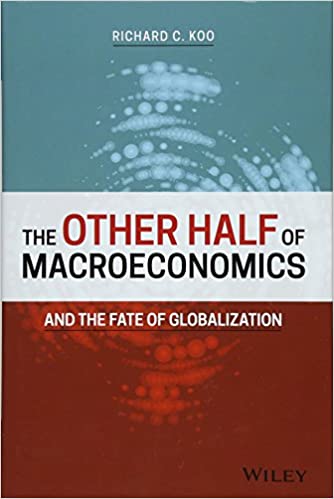 Nomura Research Institute Chief Economist Richard Koo’s 2018 book The Other Half of Macroeconomics is one of the most worthwhile reads I have had in some time. Written for general consumption, Koo explains what most experts and laypeople misunderstand about debt, deflation/inflation, and why central bank liquidity cannot drive business investment, wages and economic growth once the private sector is heavily indebted and needing to deleverage. Koo explains the lessons we should take from epic asset bubbles that burst in 1929, 1989 in Japan, 2008 and how these experiences inform us on what comes next.
Nomura Research Institute Chief Economist Richard Koo’s 2018 book The Other Half of Macroeconomics is one of the most worthwhile reads I have had in some time. Written for general consumption, Koo explains what most experts and laypeople misunderstand about debt, deflation/inflation, and why central bank liquidity cannot drive business investment, wages and economic growth once the private sector is heavily indebted and needing to deleverage. Koo explains the lessons we should take from epic asset bubbles that burst in 1929, 1989 in Japan, 2008 and how these experiences inform us on what comes next.
The failure of the vast majority of economists in government, academia and the private sector to predict either the post-2008 Great Recession or the degree of its severity has raised serious credibility issues for the profession. The repeated failures of central banks and other policymakers in all advanced countries to meet their inflation or growth targets in spite of astronomical monetary easing, have left the public rightfully suspicious of the establishment and its economists…Once the other half of macroeconomics is understood both as a post-bubble phenomenon and as a phase of post-industrial economies, it should be possible for policymakers to devise appropriate measures to overcome difficulties advanced countries are facing today such as stagnation and income inequality.


